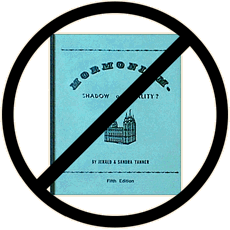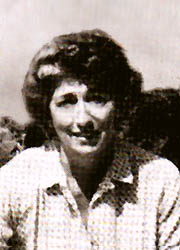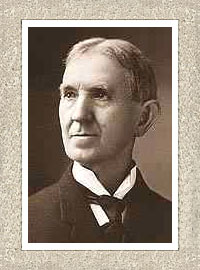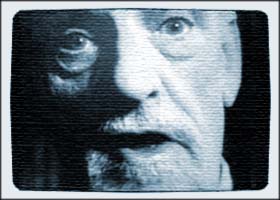
|
-- Established April 6, 2001 -- What This is All About 
IN a current on-line statement, anti-Mormon activists, Jerald and Sandra Tanner describe their Utah Lighthouse Ministry as "a Christian non-profit organization providing humanitarian outreach to the Community, and printing critical research and documentation on the LDS Church." Author Lawrence Foster paints a complementary, but somewhat different picture of the couple's work in his "Apostate Believers: Jerald and Sandra Tanner's Encounter with Mormon History," (in Roger D. Launius, editor. Differing Visions: Dissenters in Mormon History Urbana: University of Illinois Press, 1994). Assuming the editorial "we" for the remainder of this introduction, the web-host and his like-minded associates wish to point out that Utah Lighthouse Ministry (formerly a.k.a. Modern Microfilm Co.) fosters and promotes a problematic view of Mormon origins and evolution -- a distorted image which today negatively impacts the objective research and reporting of Latter Day Saint history and religion. In other words, we disagree with the foundational paradigm for the phenomenon of "Mormonism" as promulgated by Jerald and Sandra Tanner and we disagree with several of their most basic assumptions in attempting to reconstruct and explain LDS history and early LDS religion. Our disagreements with what we call "Tannerism" are of such a broad scope and extensive nature that we feel it is well worth our time and trouble to establish and maintain this web-page at the SolomonSpalding.com site. In future updates to this page (and in the sharing of information and views on its associated sub-pages) we will attempt to elucidate those disagreements with new and stimulating ideas, conclusions, and documentation.
Our Definition of TANNERISM
 The Tanners as Disciples of Fawn Brodie
The Tanners as Disciples of Fawn Brodie
 Fawn McKay Brodie (1915-1981) Following in Brodie's footsteps, the Tanners have systematically obscured or eliminated from their publications all explanations for the origin and rise of Mormonism, other than those that focus squarely upon Joseph Smith, Jr. as the founder and guiding genius of "the latter day work." History will eventually prove whether the Tanners have been correct or not in following this "Smith-as-the-author" pathway -- probably it will eventually judge their choice in this theorizing harshly. But, whatever the final outcome may be, the Tanners have themselves entered into the court of public opinion and judged certain writers (with whose opinions regarding Mormon origins they do not agree) harshly. One clear-cut example of this rush to unfair judgment may be seen in their censure of the Rev. William H. Whitsitt, third President of the Southern Baptist Theological Seminary at Louisville, Kentucky and biographer of Elder Sidney Rigdon. In this particular case, the Tanners have cast the veil of implicit character assassination over the visage of Rev. Whitsitt, all but condemning him of fabricating anti-Mormon forgeries and blasphemously placing words such as these into the mouth of Jesus Christ: "After reproving the Latter Day Saints for their corruption and blindness in permitting their President, Joseph Smith, Jr., to lead them forth into errors, where I led him not, not commanded him, and saying unto them, 'Thus saith the Lord,' when I said it not unto him, thou shalt withdraw thyself from among them."
It must stagger the imagination of even the most jaded accuser to suppose that the Reverend Doctor Whitsitt would
surreptitiously concoct such a fake "divine revelation," even if he was in agreement with the idea that Joseph
Smith, Jr. had led the early Mormons "into errors" warranting the wrath of God. Nevertheless, the Tanners
straightfacedly advance this very prevarication, in Whitsitt's good name, as the most probable source for the
spurious "Cowdery Defence," and its allusion to Sidney Rigdon having been Joseph Smith's "angel." If the question
is asked, why did the Tanners choose to "pin the blame" on William H. Whitsitt, rather than, say, Daniel Braxton
Turney, the only possible answer forthcoming evidently is that Whitsitt angered the Tanners by his advocating the
Spalding-Rigdon explanation for Book of Mormon origins -- a piece of historical reconstruction that they simply
will not consider, nor allow others to consider, if within their power to divert peoples' attention away from that
possibility.
 Rev. Dr. William Heth Whitsitt (1841-1911) But the worse part of this whole sordid affair is that, for more than four years, Sandra Tanner has refused to devote even a few moments' consideration of the on-line evidence, posted in Dr. Whitsitt's defense. She is on record as having "too little time" available to review or comment upon the current writer's refutation of dubious Tannerite defamation of an honored educator and devout disciple of the Gospel. This is only one example of how Tannerism warps and distorts events, motivations, and outcomes of the past.
The Future of anti-Mormonism
 Bogus Opposition Leader (from 1984 the movie) Mrs. Tanner (her husband passed away in Oct. 2006) may already find herself strange bed-fellows with some of the ecclesiastical heirs of Joseph Smith, in working to rid the world of things "Mormon." Before the fruition of that program, the proponents of Tannerism may also find themselves and their work co-opted by certain Latter Day Saint forces contriving to exert an invisible control over "the opposition." Our re-reading of the nature and function of the Emmanuel Goldstein underground in George Orwell's spine-chilling classic on the battle for men's minds, 1984, may be advisable. Dale R. Broadhurst ( "On a bright cold day in April..." ) |
Changing World of Tannerism | Tannerism, Reality or Shadow? | Spalding Studies
History Vault | Bookshelf | Spalding Library | Mormon Classics | Newspapers
last revised: Oct. 1, 2006